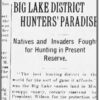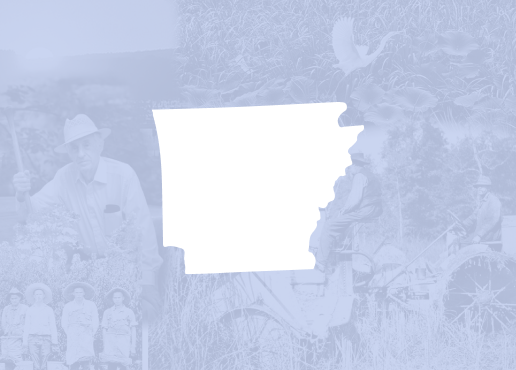calsfoundation@cals.org
Big Lake National Wildlife Refuge
Big Lake National Wildlife Refuge is one of the oldest inland national wildlife refuges. This 11,038-acre area is located in northeast Arkansas outside of Manila (Mississippi County), eighteen miles west of the Mississippi River. The refuge is one of over 540 national wildlife refuges administered by the United States Fish and Wildlife Service and is an important link for birds using the Mississippi migration corridor.
The area was a free-flowing river system until the New Madrid Earthquakes of 1811–1812 shifted the land to its current environment of swamps and lake. The major habitat types of the refuge are bottomland hardwood forest, wooded swampland, and open water. These natural habitats support a wide variety of mammal, bird, and fish species. There is abundant waterfowl habitat to support up to 100,000 birds annually during migration. Most species of waterfowl can be seen during the late winter and early spring at Big Lake. The refuge is the year-round home to a large number of wood ducks, which nest in natural tree cavities and manmade boxes. These nests produce 2,500 more ducks annually. The refuge also has several bald eagle and osprey nests, and many bald eagles can be seen in the area during the winter months.
Big Lake was established as a 3,000-acre reserve and breeding ground for native birds on August 2, 1915, by executive order of President Woodrow Wilson. It was originally under the Department of Agriculture.
The Big Lake bottoms are the only remnants of timber and swamp habitat in Mississippi County and today are a natural oasis in agriculturally developed surroundings. An extensive network of ditches in southeast Missouri drain approximately 2,500 square miles of farmland directly through the refuge. During flood periods, the inflows are heavily laden with silt. Sediment has continually filled the bottomland and swamp until there now exists a very shallow lake with an average depth of only three feet. Continued siltation has restricted beneficial plant growth and made sustaining a healthy fish population difficult while also hampering timber growth and development. The refuge has been used primarily as a sump.
Big Lake’s strategic location and historical value to migrating waterfowl, plus its value as the last stronghold of outdoor recreational habitat in this area of northeastern Arkansas, has prompted some changes over the last couple of decades. Through mutual agreements with drainage interests, the U.S. Army Corps of Engineers, the U.S. Fish and Wildlife Service, and local interest groups, a plan to improve the situation was implemented in 1991 to divert some of the silt-laden waters around Big Lake while still providing for adequate inflow to maintain and improve the area’s ecosystem. Since the implementation of the new regime of water management, water quality has improved, aquatic production has returned, waterfowl populations have become more stable, endangered and threatened species have returned to the area, and recreational interests have increased. Additional water management practices are being explored that should enhance the refuge even more.
The refuge is open to the public and offers opportunities in hunting, fishing, boating, wildlife observation, and photography.
For additional information:
Big Lake National Wildlife Refuge U.S. Fish and Wildlife Service. http://www.fws.gov/biglake/ (accessed September 8, 2022).
Bowman, Steve, and Steve Wright. Arkansas Duck Hunters Almanac. Fayetteville, AR: Ozark Delta Press Inc., 1998.
Dillard, Tom. “Think Your Lease Has Issues?” Arkansas Democrat-Gazette. December 13, 2009, p. 4H.
Robinson, Bob. “Arkansas Oasis.” Arkansas Democrat-Gazette, May 15, 2023, pp. 1D, 6D. Online at https://www.arkansasonline.com/news/2023/may/15/arkansas-big-lake-wilderness-delights-boaters-on/ (accessed May 15, 2023).
Julie Bennett
Manila, Arkansas
 Big Lake Wars
Big Lake Wars Buffalo Island
Buffalo Island Little River (Northeastern Arkansas)
Little River (Northeastern Arkansas) Big Lake Article
Big Lake Article  Mallard Lake
Mallard Lake 




Comments
No comments on this entry yet.